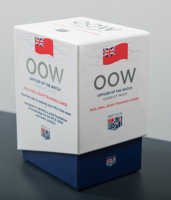Author: Rhodes, Martin
Published: December 2003, Reprint of the 2003 edition
Aimed at students studying for deck officer certificates of competency, this book is based on the ship stability syllabus for STCW’95 Chief Mate/Master Reg II/2 (Unlimited).
This book of the CD-Rom Software of the same name is aimed at students studying for professional merchant navy deck officer certificates of competency. Ship Stability for Mates/Masters covers the syllabus requirements for the current Scottish Qualification Authority (SQA) Examination (conducted on behalf of the Maritime and Coastguard Agency (MCA)) up to STCW Chief Mate/Master Reg. II/2 (Unlimited) standard. It also covers the content of HND Ship Stability Units being currently offered by UK colleges as part of the underpinning knowledge required for certification to Officer of the Watch (OOW) and Chief Mate Levels (STCW 95). Because this text is likely to be used by students not serving on UK registered ships, or who might be attending non-UK college courses, IMO regulations requirements are also quoted where appropriate in addition to the MCA requirements.
1. Basic Principles
2. Form Coefficients
3. Tonnes Per Centimetre Immersion
4. Introduction to Load Lines
5. Centre of Gravity (G) and Centre of Buoyancy (B)
6. Introduction to Transverse Statical Stability
7. Conditions of Stability
8. Initial Transverse Metacentre
9. Free Surface Effect
10. Curves of Statical Stability (GZ Curves)
11. List
12. Introduction to Trim
13. Suspended Weights
14. Assessing Compliance of a Ship's Loaded Condition with IMO Criteria
15. Curves of Statical Stability for Varying Conditions of Stability
16. The Wall Sided Formula
17. Factors Affecting GZ Curve Shape
18. The International Grain Code (IMO)
19. Inclining Experiment
20. Trim Using Hydrostatic Data
21. Dry Docking
22. Bilging
23. Angle of Heel due to Turning
24. Wind Heeling, Ice Accretion and Rolling
25. Stability Problems Associated with Specific Ship Types
26. Calculation and Assignment of Freeboard
27. Shear Forces and Bending Moments in Ships
28. Practical Ship Loading Problems






























